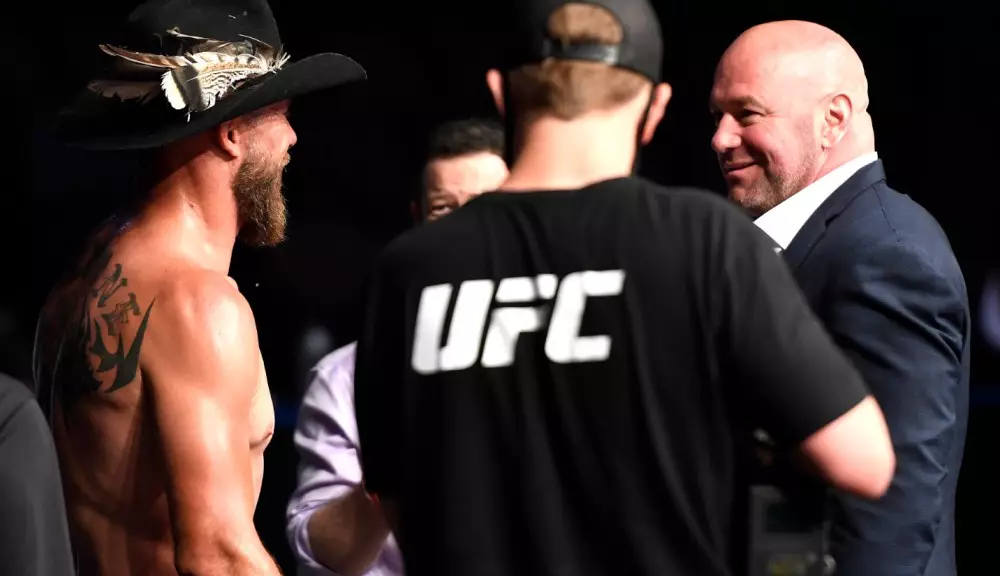In the realm of combat sports, the narrative of the comeback is oft-told, echoing the persistent allure of returning to one’s former glory. Recently, Donald “Cowboy” Cerrone, a renowned figure in mixed martial arts and a UFC Hall of Famer, expressed a desire to step back into the octagon for two more fights. While achieving a milestone of 50 fights under the UFC and WEC banners may seem like a worthy goal, it raises critical questions about the motivations behind retirement and the risks associated with returning to competition.
Dana White, the president of UFC, has openly voiced his concerns regarding Cerrone’s decision to return. His apprehension is not unfounded; retirement in professional sports, particularly in high-contact disciplines like mixed martial arts, is typically a consequence of an athlete’s acknowledgment that they can no longer compete at the level required to ensure their safety. White’s perspective is grounded in a deeper understanding of the physical and mental toll that fighting exerts on athletes. He emphasizes that many fighters find it challenging to leave the sport not merely due to financial consequences but because the thrill of competition is something that is hard to replicate elsewhere.
Cerrone’s legacy as a fighter is marked by an impressive record and an admirable attitude towards competition. Known for his willingness to take on any opponent at any time, Cerrone has garnered a fan base that deeply respects his tenacity and passion for the sport. However, the question remains: What more does he have to prove? At this stage in his career, securing a few additional fights might seem appealing, but considering the risks—especially after a submission loss in his last bout—it is crucial to weigh the implications of such a decision.
The financial motivations behind Cerrone’s desire to return can also not be ignored. White has offered support, suggesting that opportunities could be created outside of active competition to ensure Cerrone is compensated for his contributions to the sport. This proposal aligns with a growing trend in which retired athletes stay involved in their respective sports through coaching, commentary, or promotional roles. These roles not only assist in maintaining the athlete’s connection to the sport they love but also safeguard their health.
The Broader Implications of Retiring and Returning
Cerrone’s situation encapsulates a broader issue within professional sports: the struggle between the desire to perform and the necessity of stepping back. The complex interplay between emotional attachment and practical realities often makes it challenging for athletes to retire gracefully. With increasing scrutiny on athlete safety and well-being, it’s vital that figures like Cerrone consider their long-term health over the fleeting thrill of competition.
While the nostalgia for glory can be a powerful motivator, the risks accompanying a return to the cage cannot be understated. It may be time for Cerrone to embrace his legacy and channel his passion into fostering the next generation of fighters rather than risking his well-being in a sport that he has already given so much to. The spotlight may shift, but a true champion’s spirit can continue to thrive outside the octagon.

